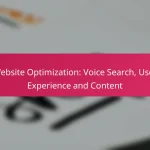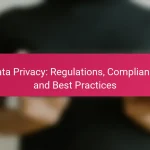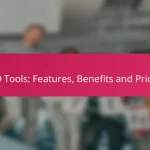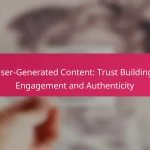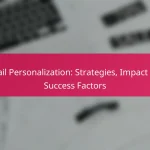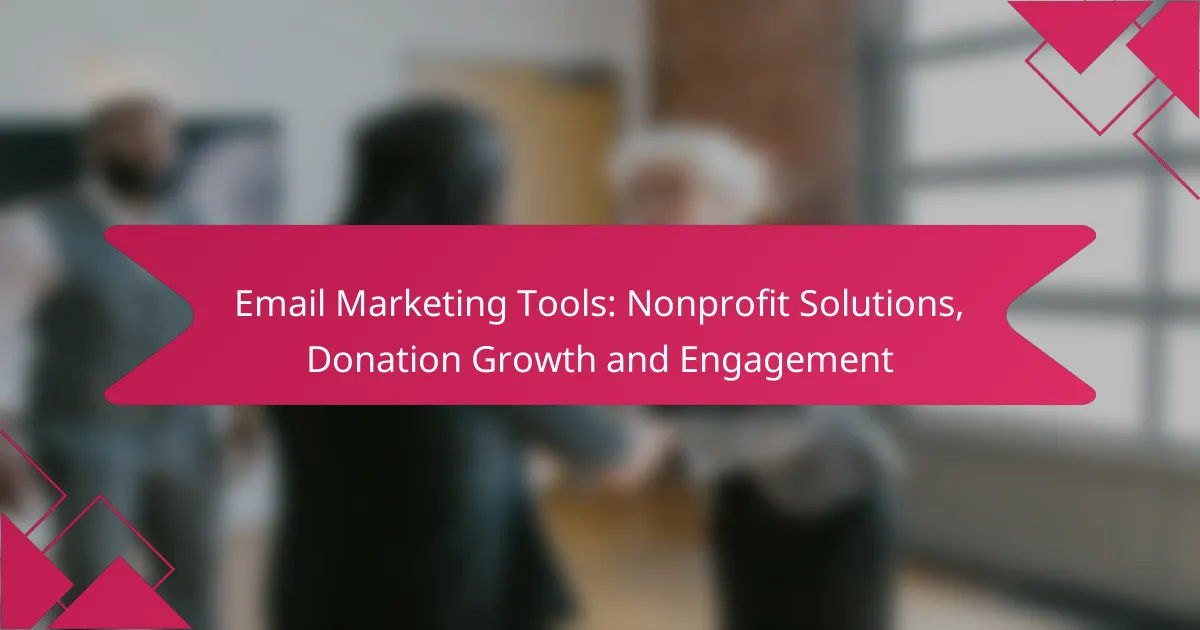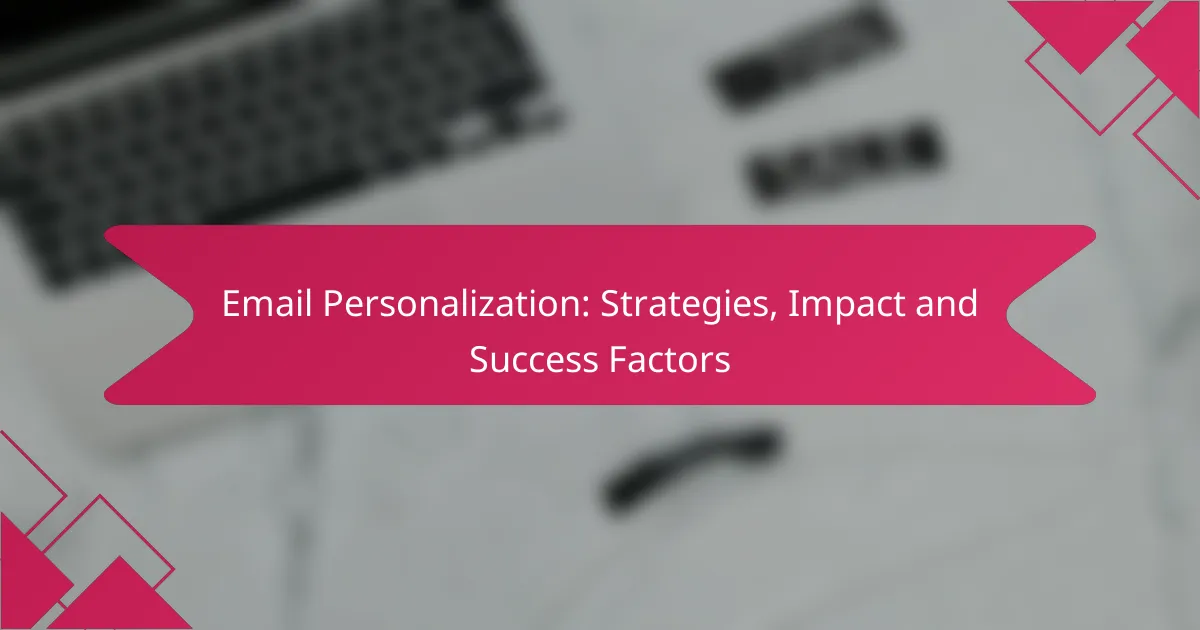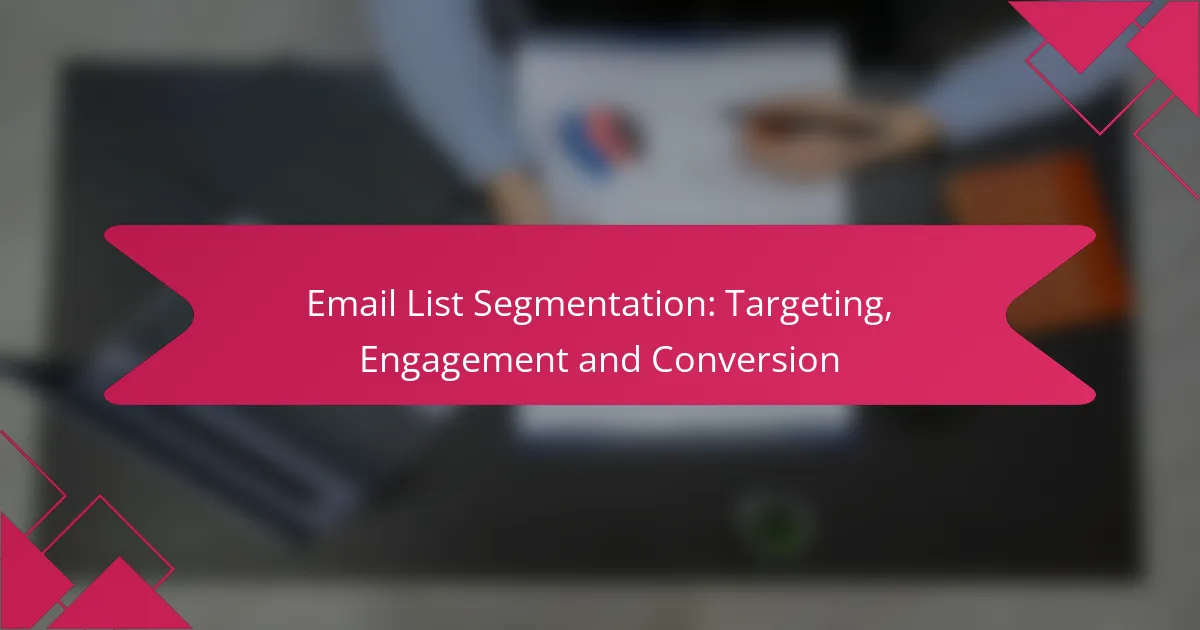Email marketing tools designed for nonprofits in Canada are essential for enhancing donor engagement and driving donation growth. These platforms provide affordable solutions with user-friendly features, including customizable templates, automation, and analytics tailored to the unique needs of nonprofit organizations. By leveraging targeted outreach and personalized content, nonprofits can effectively motivate supporters to contribute and maintain a strong connection to their mission.

What are the best email marketing tools for nonprofits in Canada?
The best email marketing tools for nonprofits in Canada focus on affordability, ease of use, and features that enhance donor engagement and growth. These platforms typically offer templates, automation, and analytics tailored to the unique needs of nonprofit organizations.
Mailchimp
Mailchimp is a popular choice for nonprofits due to its user-friendly interface and robust features. It offers a free tier for organizations with smaller lists, which can be beneficial for budget-conscious nonprofits.
Key features include customizable email templates, automation workflows, and detailed analytics. Nonprofits can easily segment their audience to target specific donor groups, enhancing engagement and donation rates.
Constant Contact
Constant Contact provides a comprehensive set of tools designed for nonprofits, including event management and social media integration. Its user-friendly platform allows organizations to create professional-looking emails quickly.
With features like list segmentation and tracking, nonprofits can monitor the effectiveness of their campaigns. Constant Contact also offers a discount for nonprofits, making it a cost-effective option for email marketing.
Campaign Monitor
Campaign Monitor is known for its visually appealing email templates and powerful analytics. This tool allows nonprofits to create stunning emails that resonate with their audience.
Its drag-and-drop editor simplifies the design process, while advanced reporting features help organizations understand donor behavior. Campaign Monitor’s automation capabilities can streamline communication, ensuring timely follow-ups with supporters.
Sendinblue
Sendinblue stands out for its all-in-one marketing solution, combining email marketing with SMS campaigns. This versatility can be particularly useful for nonprofits looking to reach donors through multiple channels.
It offers a free plan with limited features, making it accessible for smaller organizations. Nonprofits can benefit from Sendinblue’s automation tools to nurture donor relationships and drive engagement effectively.
HubSpot
HubSpot provides a comprehensive CRM platform that includes email marketing tools tailored for nonprofits. Its free tier offers essential features, while paid plans unlock more advanced capabilities.
Nonprofits can leverage HubSpot’s segmentation and personalization options to create targeted campaigns. The platform’s analytics allow organizations to track engagement and optimize their strategies for better donation outcomes.
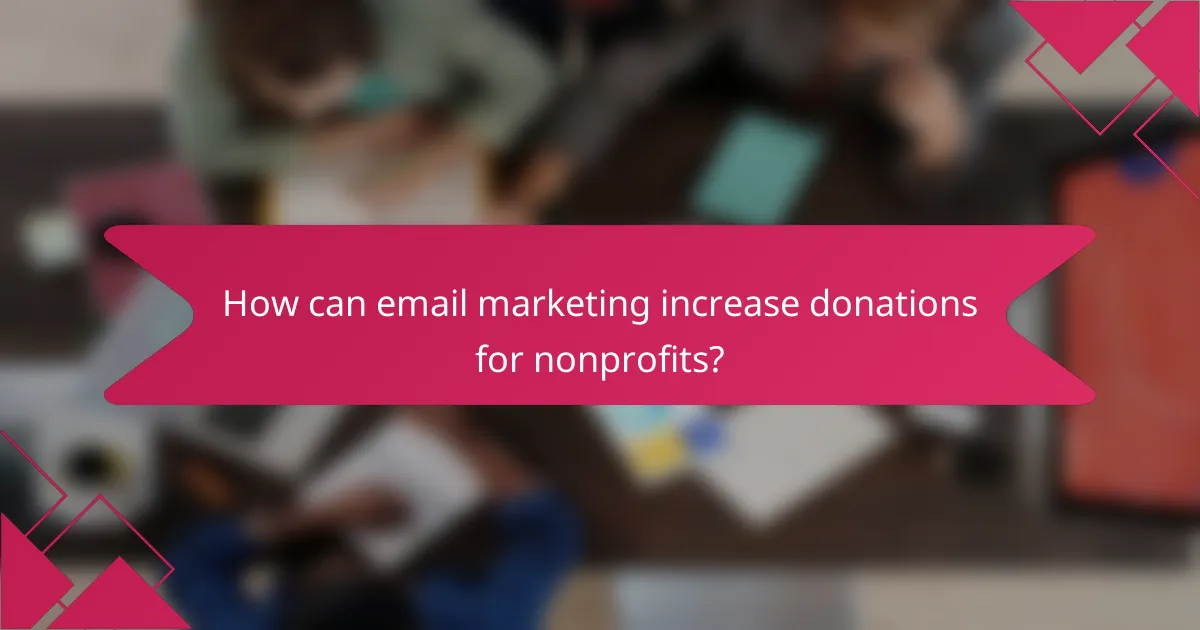
How can email marketing increase donations for nonprofits?
Email marketing can significantly boost donations for nonprofits by fostering direct communication with supporters and encouraging engagement. Through targeted outreach and personalized content, organizations can effectively motivate donors to contribute and stay connected with their mission.
Targeted campaigns
Targeted campaigns focus on specific donor segments, allowing nonprofits to tailor their messaging based on donor interests and past behaviors. By analyzing donor data, organizations can create campaigns that resonate with different groups, increasing the likelihood of donations.
For example, a nonprofit might send a campaign about animal welfare to past donors who have shown interest in that area, while promoting environmental initiatives to another group. This approach not only enhances engagement but also improves the overall effectiveness of fundraising efforts.
Personalized messaging
Personalized messaging involves crafting emails that address donors by name and reference their previous contributions or interactions. This strategy makes supporters feel valued and recognized, which can lead to increased loyalty and higher donation amounts.
Incorporating personalized elements, such as tailored content or specific calls to action, can significantly enhance the connection with donors. For instance, a nonprofit could highlight how a donor’s past contributions have made a tangible impact, encouraging them to give again.
Automated donation reminders
Automated donation reminders are a practical tool for nonprofits to encourage recurring donations or prompt one-time contributions. By setting up automated emails that remind supporters of upcoming donation deadlines or special campaigns, organizations can maintain engagement without requiring constant manual effort.
These reminders can be timed around significant dates, such as anniversaries of past donations or specific fundraising events. A well-timed reminder can lead to increased donations, especially if it includes a compelling message or a sense of urgency.

What features should nonprofits look for in email marketing tools?
Nonprofits should prioritize features that enhance engagement, streamline donation processes, and provide actionable insights. Key functionalities include segmentation capabilities, robust analytics, and seamless integration with donation platforms to maximize outreach and fundraising efforts.
Segmentation capabilities
Segmentation allows nonprofits to tailor their email campaigns to specific audience groups based on demographics, behaviors, or past interactions. This targeted approach increases engagement rates and improves the relevance of the content delivered.
When evaluating tools, look for options that enable dynamic segmentation, allowing you to adjust groups in real-time based on subscriber actions. For example, segmenting donors by their donation history can help you craft personalized messages that resonate more effectively.
Analytics and reporting
Analytics and reporting features are essential for understanding the effectiveness of email campaigns. Nonprofits should seek tools that provide insights into open rates, click-through rates, and conversion metrics to gauge audience engagement.
Consider tools that offer customizable reports and dashboards, enabling you to track performance over time. Regularly analyzing these metrics helps refine strategies and optimize future campaigns for better results.
Integration with donation platforms
Integration with donation platforms is crucial for streamlining the donation process and enhancing user experience. Nonprofits should choose email marketing tools that easily connect with popular donation systems, allowing for seamless data transfer and management.
Look for features that enable automated donation receipts and follow-up emails after contributions. This integration not only simplifies administrative tasks but also fosters donor relationships through timely communication and gratitude.

How to create effective email campaigns for donor engagement?
To create effective email campaigns for donor engagement, focus on crafting messages that resonate with your audience and encourage action. Utilize compelling subject lines, clear calls to action, and storytelling techniques to foster a deeper connection with your donors.
Compelling subject lines
Compelling subject lines are crucial for increasing open rates in your email campaigns. Aim for concise, engaging phrases that spark curiosity or convey urgency. For example, “Make a Difference Today” or “Join Us in Changing Lives” can motivate recipients to open your email.
Consider personalizing subject lines by including the recipient’s name or referencing past donations. This approach can enhance engagement and make your emails feel more relevant to each donor.
Clear calls to action
Clear calls to action (CTAs) guide donors on what steps to take next. Use direct language like “Donate Now” or “Join Our Mission” to prompt immediate responses. Ensure that your CTAs stand out visually, using buttons or bold text to draw attention.
Limit the number of CTAs in each email to avoid overwhelming your audience. A focused approach, typically featuring one primary action, can lead to higher conversion rates.
Storytelling techniques
Storytelling techniques can significantly enhance donor engagement by creating emotional connections. Share impactful stories about individuals or communities that have benefited from donations, illustrating the real-world effects of contributions.
Use vivid imagery and relatable narratives to make your stories resonate. Incorporate quotes from beneficiaries or volunteers to add authenticity and encourage donors to feel part of the mission.
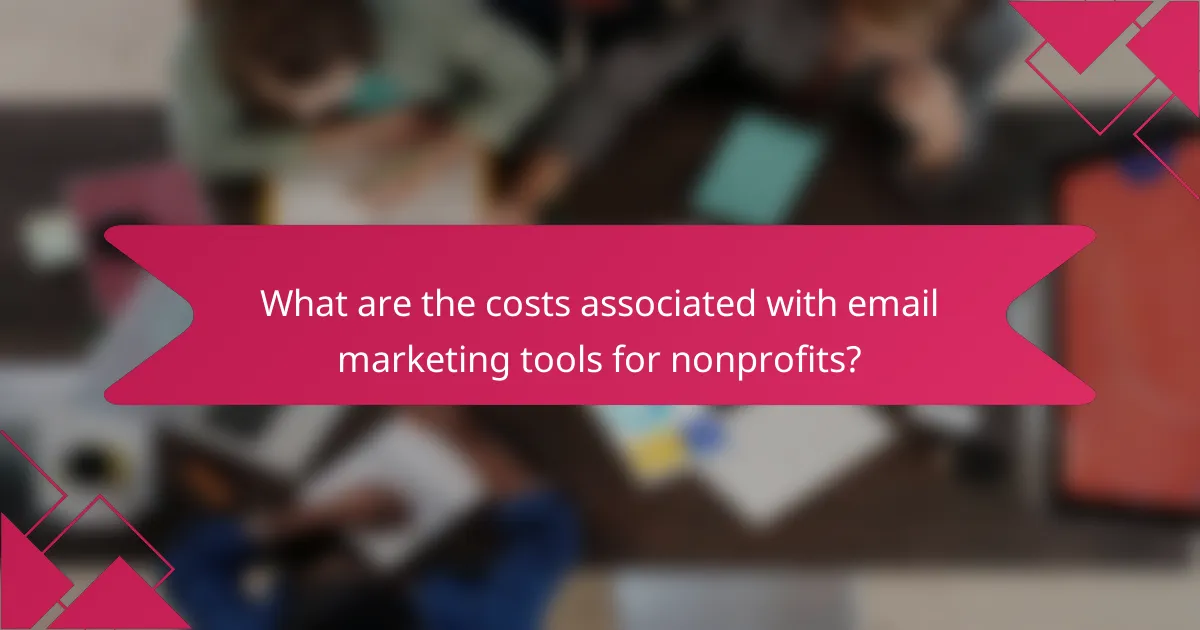
What are the costs associated with email marketing tools for nonprofits?
The costs of email marketing tools for nonprofits can vary widely based on features, audience size, and service providers. Nonprofits should consider both monthly subscription fees and any additional pay-per-click options to effectively budget for their email marketing efforts.
Monthly subscription fees
Monthly subscription fees for email marketing tools typically range from low tens of USD to several hundred USD, depending on the provider and the features included. Nonprofits often benefit from discounted rates or special pricing plans tailored to their needs.
When selecting a tool, consider the number of subscribers and the volume of emails sent, as these factors can significantly impact the overall cost. Popular platforms like Mailchimp, Constant Contact, and Sendinblue offer tiered pricing based on subscriber count, making it essential to choose a plan that aligns with your organization’s growth.
Pay-per-click options
Pay-per-click (PPC) options can complement email marketing by driving traffic to donation pages or events. These costs vary based on the platform and competition for keywords, often ranging from a few cents to several dollars per click.
Nonprofits should carefully evaluate the potential return on investment (ROI) for PPC campaigns. Setting a clear budget and monitoring performance metrics can help ensure that spending aligns with fundraising goals. Additionally, consider using Google Ads for Nonprofits, which offers credits to eligible organizations, reducing overall advertising costs.
